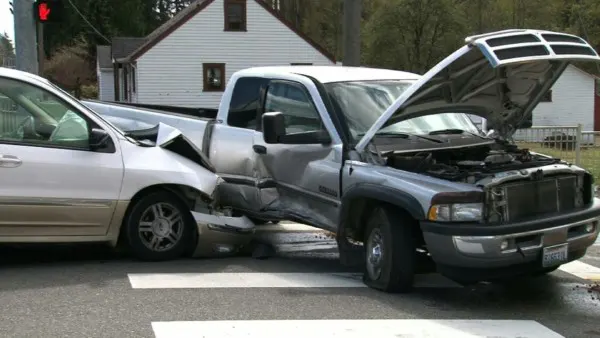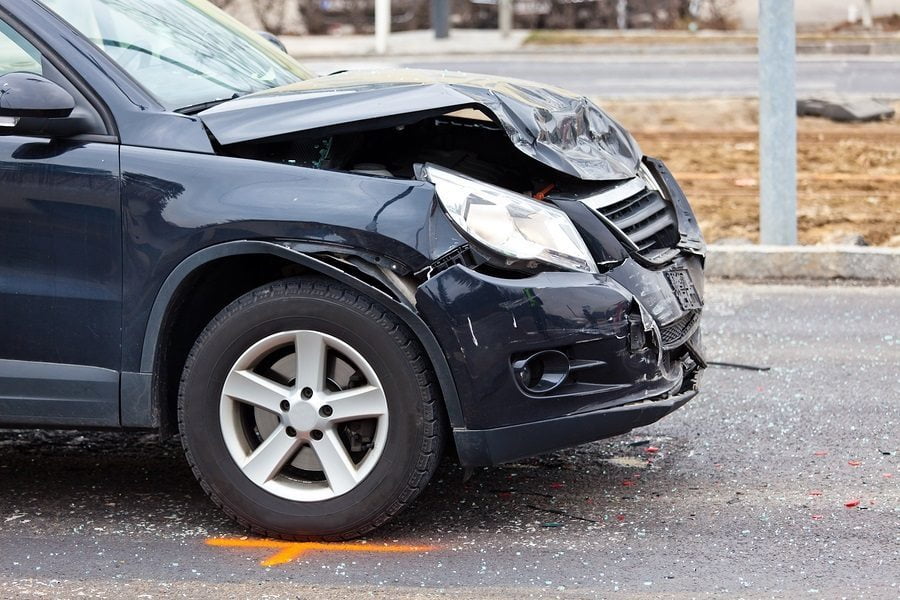Being the victim of a hit-and-run accident leaves you not only with physical injuries but also with a sense of shock and violation. While this may not be much consolation, you’re not alone—Ohio has the 8th most hit-and-runs across the country.
That said, every second counts after a hit and run. The sooner you report the incident and take action, the higher your chances of identifying the responsible driver and receiving the compensation you deserve.
Understanding how to report a hit and run in Ohio empowers you to take control of the situation and pursue justice. In this article, we’ll break down the process and highlight key information you need to know.
What is the Ohio Hit-and-Run Law?
In Ohio, fleeing the scene of an accident without stopping to provide information or aid is commonly known as a “hit and run” or, historically, a “hit skip.”
Under the Ohio hit-and-run law, if you’re involved in an accident, you must stop immediately at the scene or as close as possible without obstructing traffic and:
- Exchange information: Provide your name, address, driver’s license number, and vehicle registration information to the other driver(s) involved.
- Render aid: If anyone is injured, you must provide reasonable assistance, such as calling for medical help.
- Notify the police: If the accident results in injury, death, or property damage exceeding $1,000, you must report it to the police.
- Leave a note: If you hit an empty vehicle or other property, you must leave a note with your contact information in a conspicuous place.
Even a minor fender bender can have major consequences if you leave the scene—think: criminal charges, fines, license suspension, and even prison time (depending on how severe the accident or resulting injuries are).
How to Report a Hit-and-Run Accident in Ohio
Step 1: Ensure Your Safety and Check for Injuries
Immediately following a hit-and-run, your first priority should be safety. Don’t try to chase the other driver—the last thing you need is to put yourself in further danger.
Carefully move to a safe location if necessary and check yourself and any passengers for injuries. If anyone is hurt, make sure they get medical attention immediately.
Step 2: Call the Police
As soon as you’re in a safe location, call the police and report the hit-and-run. Be prepared to provide them with as much detail as possible, including:
- Description of the fleeing vehicle: Make, model, color, any distinguishing features (dents, stickers, etc.), and license plate number if you were able to see it
- Direction the vehicle fled: Which way did they turn? Did you see them get on a highway?
- Description of the driver: If you saw the driver, describe their appearance, including gender, approximate age, hair color, clothing, etc.
- Location and time of the incident: Be as specific as possible about where and when the hit and run occurred.
The police will create an official hit-and-run accident report, which is key for your insurance claim and any potential legal action.
Step 3: Gather Evidence
While you wait for the police to arrive, try to collect as much evidence as possible:
- Photos: Take pictures of the damage to your vehicle, the accident scene, and any skid marks or debris left behind.
- Witnesses: If there were any witnesses, ask for their names and contact information. They can be invaluable in supporting your claim.
- Surveillance footage: If the hit-and-run occurred near businesses or other buildings, check to see if they have surveillance cameras that could have captured the incident. Owners might be willing to share this footage with the police, which can be invaluable in identifying the fleeing driver.
- Your own notes: Write down everything you remember about the accident while it’s still fresh in your mind. This includes the sequence of events, the other driver’s actions, and any other relevant details.
Step 4: Contact an Attorney
As attorneys specializing in hit-and-run cases, we’ve seen too many instances where victims contact the insurance company first without realizing that anything they say can be used against them later. Insurance adjusters are skilled at minimizing payouts, and they might try to get you to accept a lowball settlement or even twist your words to deny your claim altogether.
That’s why it’s essential to contact a personal injury lawyer as soon as possible after a hit-and-run. We can:
- Shield you from insurance company tactics: We’ll handle all communication with the insurance company, protecting you from their attempts to undervalue your claim or shift blame onto you.
- Conduct a thorough investigation: We have the resources and experience to dig deeper into the accident, potentially uncovering additional evidence that can strengthen your case.
- Fight for maximum compensation: We’ll aggressively negotiate with the insurance company or, if necessary, take your case to court to ensure you receive the full compensation you deserve for your injuries, medical bills, lost wages, and pain and suffering.
At Slater & Zurz, we understand how a hit-and-run can leave you feeling shaken and vulnerable—it can feel like you’re up against a faceless enemy.
But remember: you’re not alone. Our team is here to guide you through the process, fight for your rights, and help you win the justice and compensation you deserve, regardless of whether the police successfully find the driver who fled the scene.
We offer a free, no-obligation consultation to discuss your case and provide personalized legal advice. And with our “No Win, No Fee” guarantee, you pay nothing unless we win your case. Call us at 330-762-0700 today to get the support you need.
Frequently Asked Questions
What if they can’t identify the other driver? Who pays?
If the hit-and-run driver remains unidentified, your own uninsured motorist (UM) coverage will likely kick in to cover your damages. UM coverage is designed to protect you in situations where the at-fault driver is uninsured or unknown.
Is there a time limit for reporting a hit-and-run in Ohio?
Yes, you must report a hit-and-run accident to the police within 24 hours. After that, you might have trouble filing an insurance claim or pursuing legal action.
What if I was partially at fault for the hit-and-run accident?
Ohio follows a modified comparative negligence rule. This means you can still recover compensation even if you were partially at fault, as long as your fault is not greater than 50%.
Can I sue the hit-and-run driver if they are eventually identified?
Yes, if the hit-and-run driver is identified, you can pursue a personal injury lawsuit against them to recover damages beyond what your insurance covers, including pain and suffering, emotional distress, and other non-economic damages.





